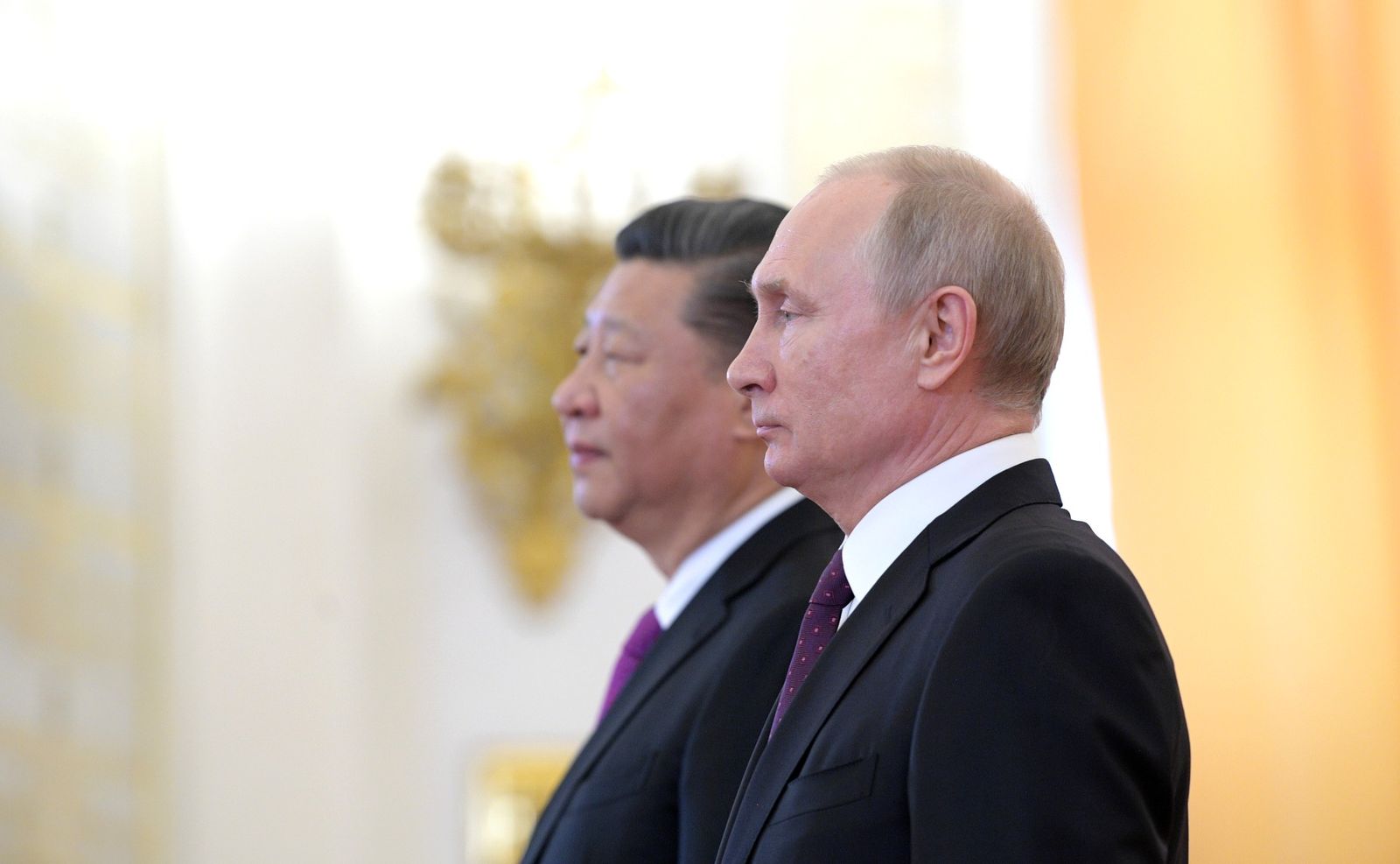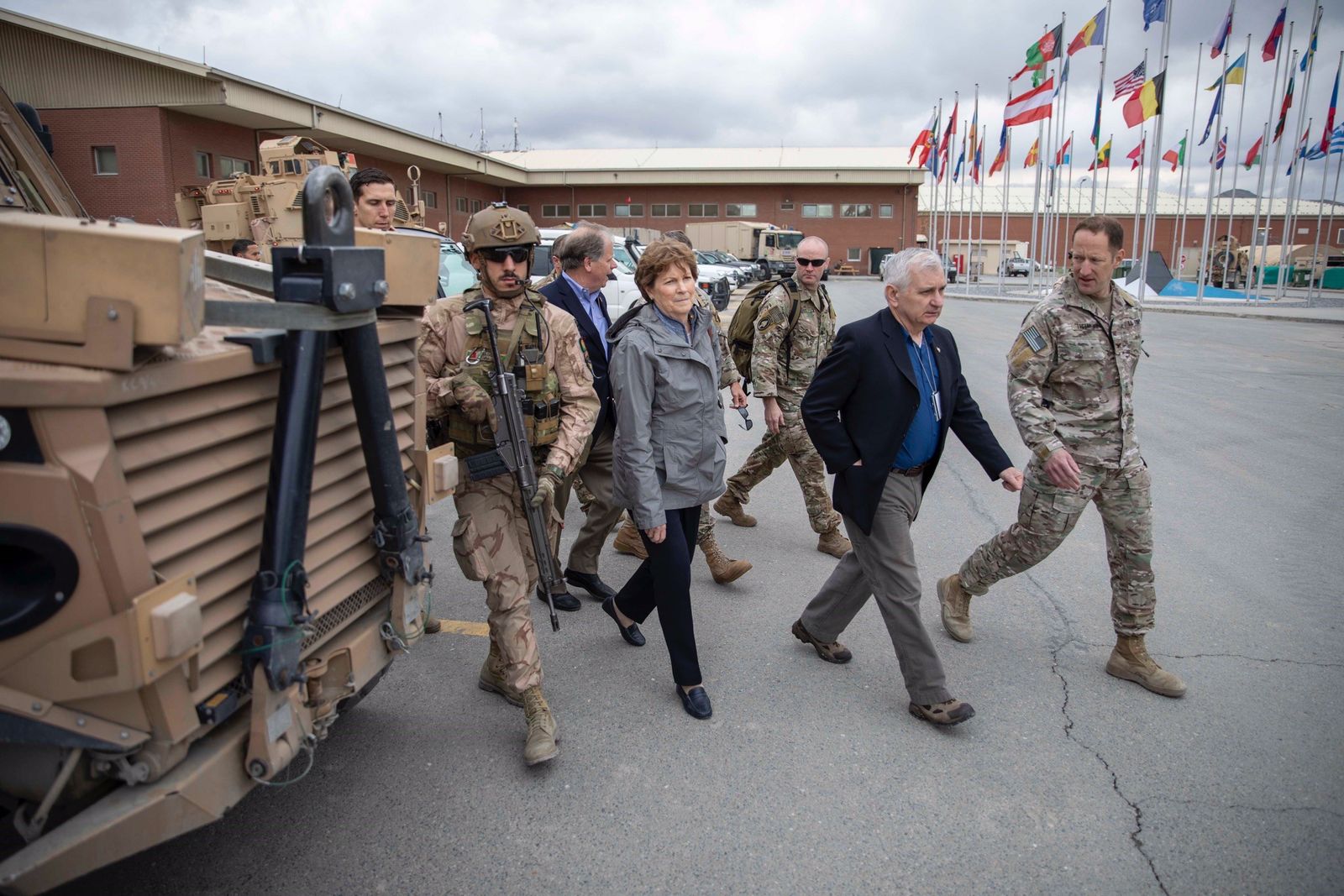On February 2, 2024, President Joe Biden ordered more than 125 bombs to be dropped on upwards of 85 targets in Iraq. This campaign came in response to an attack from an Iran-aligned Iraqi militia group and appears to have successfully deterred further attacks. However, the scope of Biden’s response—and the potential escalatory danger therein—raises questions about legislative checks on the executive in the context of such military actions. The Biden administration justified its actions by invoking:
- The president’s Article II authority as Commander-in-Chief of the armed forces. Article II gives the executive authority to carry out military actions to defend the United States, as long as these actions do not rise to the level of war in actual or predicted nature, scope, or duration. The War Powers Resolution of 1973 limits this power, preventing the president from engaging military forces for more than 60 days without Congressional authorization.
- The 2001 Authorization for Use of Military Force (AUMF), which authorizes military action against entities that “planned, authorized, committed, or aided the terrorist attacks that occurred on September 11, 2001, or harbored such organizations or persons.”
- The 2002 AUMF, which authorizes military action “to defend the national security of the United States against the continuing threat posed by Iraq.”
However—especially considering subsequent strikes on July 31 that killed four members of Iraq's Popular Mobilization Forces (PMF) near Baghdad—the United States has arguably been in combat in Iraq for more than sixty days. Furthermore, al-Qaeda—not an Iraqi militia group—was responsible for 9/11, and the United States is now an ally of Iraq. How, then, did these authorizations come to justify such strong unilateral executive action more than two decades later?
A Brief History of US Involvement in Iraq
In March 2003, the United States invaded Iraq, asserting that it had a duty to topple Saddam Hussein’s regime and destroy his weapons of mass destruction. The United States quickly defeated and disbanded Iraqi forces in May but chose to occupy Iraq for the foreseeable future to counter threats ranging from Hussein sympathizers to Iranian-backed Shi’ite militia groups (SMGs) and al-Qaeda in Iraq (AQI). Stability gradually improved, and the United States signed a bilateral agreement with the new Iraqi government in December 2008 to establish a timetable for US withdrawal.
The United States withdrew on schedule in 2011 but returned in 2014 at Iraq’s invitation to counter the rapidly growing Islamic State of Iraq and Syria (ISIS). US and allied forces successfully eliminated ISIS from Iraqi territory by December 2017 but continued to remain in Iraq with the government’s consent to prevent an ISIS resurgence. However, the SMGs—who are formally members of the Iraqi military but act independently—demanded a US withdrawal and began attacking US forces in 2019. Retaliatory attacks turned Iraqi public opinion against the United States, which forced the United States to end its combat mission in Iraq in 2021, with the remaining US forces transitioning to an advisory role.
After Israel’s invasion of Gaza in October 2023, however, the SMGs accelerated their campaign against US advisory forces in Iraq, largely because of perceived US support for Israel in the conflict. Whereas Iran-backed SMGs attacked US forces in Syria and Iraq 120 times from 2021 to October 2023, they launched over 160 attacks in the four-month period between October 2023 and February 2024. The United States retaliated against Iran-backed SMGs 12 times between October 17, 2023 and September 10, 2024. On January 28, 2024, militias attacked Tower 22—a US base in Jordan—killing three and wounding 40 US soldiers. In response, the Biden administration initiated a massive retaliatory campaign against several Iraqi militias on February 2, which deterred further attacks for about six months, with attacks erupting again in July. It remains to be seen how the recent ceasefire between Israel and Hezbollah could impact the activities of Iran-backed, Iraqi militias in Iraq and Syria. SMGs continue to demand US withdrawal from Iraq, threatening violent escalation.
All of these US military actions—including the February 2 bombing—have been carried out unilaterally by the president, justified under domestic law by a combination of Article II of the Constitution, the 2001 AUMF, and the 2002 AUMF. Despite the specific wording of these laws, their implementation has evolved over time, used to authorize actions as diverse as an outright invasion, an occupation, and retaliatory strikes against SMGs.
The Evolving AUMFs
The first expansion of the AUMFs came in 2003 when the Bush administration argued that the 2002 AUMF justified not only attacking Iraq but also occupying Iraq. Congress introduced the 2002 AUMF with the narrow aim of allowing Bush to threaten and eventually attack Hussein’s regime in Iraq. Immediately after the United States defeated Hussein, however, Bush reinterpreted the 2002 AUMF. He argued that the “continuing threat posed by Iraq” did not refer only to Hussein’s government (a threat ‘by Iraq’), but rather to any threat to the United States stemming from Iraq. Securing a democratic and stable Iraq was vital to US interests, so threats against the new Iraqi regime were deemed threats against US interests. Therefore, Bush’s administration concluded that the 2002 AUMF justified occupying Iraq and using the US military to protect the new regime. He further argued that Congress ratified this understanding of the 2002 AUMF by appropriating funding for his administration’s military actions in Iraq. Although Bush’s efforts to occupy Iraq proved unpopular after the initial invasion, Democrats in Congress were unable to constrain Bush and his AUMFs, as they lacked the supermajority necessary to override his veto. Less than a year into its life, the 2002 AUMF—originally passed to justify action against a hostile Iraqi government—came to authorize any action in support of the now allied Iraqi government.
President Obama expanded the reach of both AUMFs in 2014 when he reintervened in Iraq to counter ISIS. Although Obama initially justified executive military decisions through his Article II powers as Commander-in-Chief, it soon became apparent that the campaign would last longer than 60 days, so he turned to the AUMFs. In his view, the 2001 AUMF referred not only to the groups directly responsible for 9/11 but also to the descendants of those groups. Because ISIS was a successor to al-Qaeda in Iraq (AQI)—which was, in turn, a splinter of al-Qaeda—Obama argued that the 2001 AUMF authorized action against ISIS. This line of argumentation has justified US counterterrorism operations all over the world, with President Trump, for example, claiming that the 2001 AUMF justifies action against more than eight separate terrorist groups. Obama’s administration further argued that the 2002 AUMF had “always been understood to authorize the use of force for the related purposes of helping to establish a stable, democratic Iraq and addressing terrorist threats emanating from Iraq.” Because ISIS threatened Iraq, the 2002 AUMF then seemed to justify any action against ISIS, even if that action rose to the level of war.
President Trump further expanded the executive’s interpretation of the 2002 AUMF. In 2018, his administration clarified that, while the 2002 AUMF limits authorization to threats emanating from Iraq, it places no limit on where the authorized force may be deployed. In other words, he argued that the president can use force anywhere in the world, as long as that force is responding to something related to Iraq. In 2019, to justify responding to attacks from Kata'ib Hezbollah in Iraq and Syria, he employed the concept of “ancillary self-defense.” According to Trump’s lawyers, in authorizing the mission of US soldiers in Iraq through the 2001 and 2002 AUMFs, Congress also authorized any force employed to defend those soldiers as they carried out that mission. This authority was also unbounded by space; Trump used ancillary self-defense under the 2001 AUMF to justify actions in Syria.
Finally, in 2020, Trump again stretched the 2002 AUMF by using it to justify the assassination of Iranian commander Qasem Soleimani in Iraq—a decision taken without Congressional authorization that could have embroiled the United States in a vicious war with Iran. Trump’s administration argued that because Soleimani was orchestrating attacks against US personnel in Iraq, he constituted a threat to the United States emanating from Iraq and was thus a fair target under the 2002 AUMF. Trump’s legal team also invoked the president’s Article II authority, arguing that the strike against Soleimani did not constitute an act of war. However, Trump’s legal team chose not to rely solely on Article II authority, probably because the strike could have reasonably been interpreted as spurring broader escalation that might constitute war. Notably, Trump’s interpretation of the 2002 AUMF was explicitly unpopular with Congress; Congress passed a bill claiming that the 2002 AUMF did not justify attacks against Iran in the wake of the strike on Soleimani, but Trump vetoed the measure. By the end of Trump’s term, the 2002 AUMF seemed to justify not only actions against hostile militias in Iraq, but also actions against the Iranian military that could easily give rise to war.
Although Biden has not substantially expanded the understanding of the AUMFs, his actions in Iraq underscore the extent to which that understanding has evolved. Biden relied solely on Article II powers for his administration’s first seven retaliatory actions against SMGs—four before October 7, 2023 and three between October 7 and November 22, 2023—but has since started citing both AUMFs, suggesting that he believes his Article II authority is no longer sufficient. A possible explanation for this shift is that his lawyers fear that either his actions have risen to the level of war or that the different retaliations can be considered one single campaign that has lasted more than sixty days. As such, Biden’s report on the February 2 retaliation to the Tower 22 attacks includes all three: Article II power, the 2001 AUMF, and the 2002 AUMF.
Lessons about Executive War Powers Today
More than two decades after their enactment, the 2001 and 2002 AUMFs still remain on the books, and they grant the US executive far more discretion than originally intended. Thanks to decades of instrumentalization and reinterpretation by various administrations, these AUMFs now allow the president to circumvent constitutional and war power controls on the use of military force. As long as the force is tangentially related to Iraq or terrorism in the Middle East, the executive is functionally able to employ whatever force it deems necessary, wherever and whenever it chooses.
This power means that the executive could even initiate a major war without Congressional approval. Given that Iraq borders Iran and that Iran frequently operates in Iraq against the United States, it is easy to see how a president could unilaterally authorize an escalatory attack against Iran during a time of tension, justified by the 2002 AUMF. A different president, for example, might have retaliated to the Tower 22 attack by striking targets within Iran, as several Republicans in Congress urged. Congress attempted to hedge against this possibility in the wake of Soleimani’s assassination by stating that AUMFs do not “serve as a specific statutory authorization for the use of force against Iran,” but Trump vetoed this measure. As a result, the executive then explicitly retains the ability to launch a direct attack on Iran without consulting Congress or the American people.
It remains a debate, however, whether the reinterpretations of the 2001 and 2002 AUMFs are beneficial or detrimental; some scholars argue that empowering the executive allows for quick decisions during crises, while others hold that broad executive war powers are undemocratic and enable catastrophic blunders.
What’s Next? War Powers and the Transition of Power
The 2024 presidential election marks a key turning point in US military doctrine and involvement in the Middle East. A Harris administration would have likely aligned with Biden’s policies, given their similar perspectives on other foreign policy issues. Biden signaled his support for a bill—passed by the Senate but currently stalled in the House—to repeal the 2002 AUMF in 2023, and he called broad executive war powers “monarchist” as a senator. A Harris administration would have likely remained open to efforts to repeal the AUMFs, but, in the absence of such attempts, have neither expanded nor reined in the AUMFs.
The next Trump administration, on the other hand, will likely seek to further stretch war powers. Trump’s past actions—from strikes against Syria to the assassination of Soleimani—demonstrate a willingness to stretch Article II and AUMF authority seemingly to infinity. Trump’s reelection also reignites tensions related to these past military actions. While Iraqi leaders such as Prime Minister Mohammed Shia' al-Sudani congratulated Trump on his reelection, there is still an outstanding arrest warrant issued by an Iraqi court for his involvement in the drone strike that killed Soleimani and Iraqi militia leader Abu Mahdi al-Muhandis. Trump’s involvement in these assassinations is also the basis of backlash to his reelection among Iran-aligned Iraqi political groups and militias. If Trump does decide to escalate US military involvement in Iraq, it would set a strong precedent for broad executive war powers during future presidencies. It would also mark a precarious chapter in US-Iraq relations.
Given this uncertainty, Congress’ stance on the AUMFs after the transition of power matters even more. The last time Congress repealed an AUMF was in 1974, so any move to repeal either the 2001 or 2002 AUMFs could set an important precedent. Congress failed to pass bills to repeal the 2002 AUMF in 2011, 2021, and 2023, despite largely bipartisan support, primarily because Republican war hawks favor policies that would allow the president to respond quickly to Iranian aggression. The 2001 AUMF similarly came under fire during Obama’s presidency, but it does not currently face major opposition. Given the reelection of Trump and incoming Republican majorities in the Senate and House, any attempt to rein in executive military power through AUMF repeals is unlikely in the near future.
The issue with measures to replace the AUMFs is that they frequently struggle to garner public support. AUMFs are inherently secretive—they authorize military action absent public or Congressional scrutiny—so the public often simply does not know that the AUMFs are being used. It is therefore crucial that the public becomes informed about these authorizations so that it can make informed decisions about the future of American military policy.





